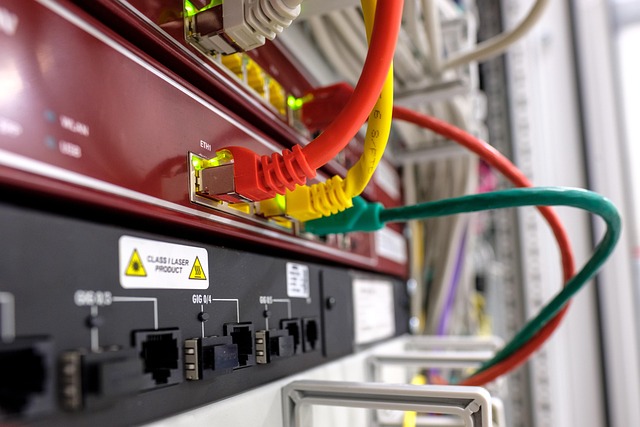Low voltage cabling (60V and below) is vital for modern businesses, enabling safe and efficient data/voice transmission through diverse connectivity needs. Its compact size, discreet installation, and flexible design support both new constructions and retrofits. These systems reduce latency, accommodate high data volumes, future-proof infrastructure, minimize signal loss, simplify installation, and are scalable for all business sizes. Regular maintenance ensures optimal network performance and longevity.
In today’s digital era, high-speed voice and data cabling is vital for businesses aiming to stay competitive. This article delves into the world of low voltage cabling systems, exploring their understanding, benefits, and efficient design. We dissect installation and maintenance best practices, emphasizing the importance of seamless network infrastructure. By leveraging high-speed data transmission, businesses can revolutionize operations, enhance productivity, and navigate the digital landscape with ease.
Understanding Low Voltage Cabling Systems
Low voltage cabling systems are a critical component in modern business infrastructure, enabling high-speed data and voice transmission across networks. Unlike traditional high-voltage wiring, low voltage cabling operates at safer levels, typically below 60 volts. This makes it not only more efficient but also easier to install and maintain. By using dedicated cables for data and voice signals, businesses can enhance network performance and reliability.
These systems are designed to support a wide range of connectivity needs, from standard Ethernet connections to advanced VoIP (Voice over Internet Protocol) services. The versatility of low voltage cabling allows for seamless integration with various business applications, ensuring smooth communication flows within and between buildings. Moreover, their compact size and discreet installation make them ideal for both new constructions and retrofits, contributing to a more organized and aesthetically pleasing workspace.
Benefits of High-Speed Data Transmission
High-speed data transmission is a cornerstone of modern business operations, enabling seamless communication and efficient workflow. With advancements in technology, businesses now have access to robust low voltage cabling solutions that facilitate incredibly fast data transfer rates. This evolution has revolutionized how organizations conduct their daily activities, fostering productivity and competitiveness on a global scale.
The benefits are manifold; high-speed data transmission reduces latency, ensuring quick response times for applications and services crucial to business success. It supports the growing demand for large volumes of data to be processed and shared instantaneously, from simple email communication to complex cloud-based operations. Moreover, low voltage cabling offers flexibility in design and installation, allowing for easy expansion and adaptation to evolving business needs without sacrificing performance.
Designing Efficient Network Infrastructure
Designing an efficient network infrastructure is paramount for any modern business aiming to stay competitive in today’s digital landscape. High-speed voice and data cabling, often facilitated by low voltage cabling solutions, serves as the backbone of this infrastructure. By employing structured cabling systems, businesses can create a robust and flexible network architecture that supports current requirements while future-proofing against evolving technologies.
Low voltage cabling offers numerous advantages in terms of installation, performance, and cost-effectiveness. These cables are designed to transmit data at high speeds with minimal signal loss, ensuring reliable connectivity across the entire network. Moreover, low voltage systems simplify the installation process, reducing downtime and labour costs. This scalability and adaptability make them ideal for businesses of all sizes, enabling efficient network expansion as operations grow.
Installation and Maintenance Best Practices
When it comes to high-speed voice and data cabling for businesses, proper installation and ongoing maintenance are paramount. Best practices include ensuring all cabling is correctly labelled and organized, using specialized tools to avoid damage during installation, and adhering to industry standards for proper connectivity and performance. Utilising low voltage cabling is a crucial step in this process, as it minimizes electrical noise that can interfere with data transmission.
Regular maintenance involves routine checks for any signs of damage, wear and tear, or loose connections. This includes visually inspecting cables for visible damage, testing network functionality, and replacing any faulty components promptly. A structured maintenance schedule, coupled with the use of high-quality cabling materials, ensures optimal performance and longevity of the network infrastructure, thereby enhancing overall business operations.
High-speed voice and data cabling, enabled by efficient low voltage cabling systems, is no longer an option but a necessity for modern businesses. By understanding the benefits of high-speed data transmission, designing robust network infrastructure, and adhering to best practices during installation and maintenance, businesses can harness the full potential of their connectivity. This ensures not only enhanced productivity but also positions them for future growth in today’s digital era.
